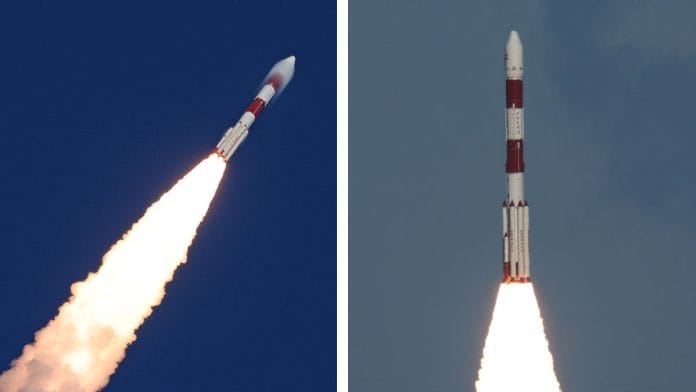New Delhi: A day after rescheduling the launch citing a “technical anomaly”, the Indian Space Research Institute (ISRO) Thursday successfully launched the PROBA-3 mission for the European Space Agency (ESA), a feat that has bolstered India’s position as a reliable global launch partner.
At 4:04 pm, the PROBA-3 satellites took flight onboard ISRO’s rocket Polar Satellite launch vehicle (PSLV-C59) from Satish Dhawan Space Centre in Sriharikota.
“Celebrating Success! The PSLV-C59/PROBA-3 mission reflects the dedication of NSIL, ISRO and ESA teams. This achievement highlights India’s critical role in enabling global space innovation. Together, we continue building bridges in international space collaboration,” ISRO announced on ‘X’.
Just minutes after the launch, the ESA also issued a statement confirming the health of the satellites. “The double-satellite is the most ambitious member yet of our Proba family of experimental missions,” the ESA statement read.
According to the ESA, the two spacecraft flew together as one, maintaining precise formation down to a single millimetre, implying that the positions of the spacecraft were such that the distance between them remained fixed.
One will block the fiery disc of the Sun for the other to enable prolonged observations of the corona or outermost layer of the star’s atmosphere, the source of solar winds and space weather.
Another significance of the mission is that it marks the ESA’s return to space launches with ISRO after nearly 23 years. The last time the ESA and ISRO partnered for a launch was for the first PROBA-1 flight in 2001 onboard PSLV-C3.
“The satellites have been placed in the right orbit,” ISRO chairperson S. Somanath said after the launch.
PROBA-3: satellites and objectives
PSLV-C59 placed the two spacecraft into a highly elliptical orbit—an elongated orbit with high eccentricity (deviation of a curve from circularity)—as a dedicated mission of NewSpace India Limited (NSIL), the commercial arm of ISRO.
The PROBA-3 mission is an in-orbit demonstration (IOD) mission of the ESA.
The two spacecraft are the Coronagraph Spacecraft (CSC) and the Occulter Spacecraft (OSC). The spacecraft were launched together in a stacked configuration, making the mission the first-of-its-kind to ever be attempted worldwide.
The ESA said in the statement that the mission marks the next step in formation flying.
“Its two satellites –the Coronagraph spacecraft and the Occulter spacecraft – will maintain formation to a few millimetres and arc second precision at distances of around 150 metres for six hours at a time,” it said.
The space agency added that, in effect, the pair will be forming a virtual giant satellite, which will be achieved autonomously, without relying on guidance from the ground.
After the launch and some initial tests, the two satellites were separated and injected into a safe relative tandem orbit.
During its demonstration phase, the mission will also showcase a Collision Avoidance Manoeuvre (CAM), ensuring that the satellites can be left safely in orbit without collision or drifting away from each other.
“Normal operations will then include both formation flying manoeuvres and scientific observations using a giant solar coronagraph that will block out the blinding light from the solar disc to acquire continuous views of the Sun’s ghostly corona, or surrounding atmosphere,” ESA said in its mission document.
The satellites will repetitively demonstrate acquisition, rendezvous, proximity operations, formation flying, coronagraph observations, separation and convoy flying every orbit.
(Edited by Radifah Kabir)
Also Read: ISRO prepares for responsible space missions, aims to go debris-free by 2030






